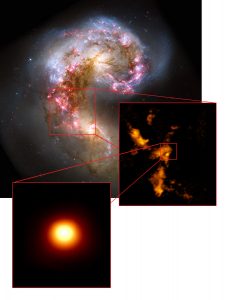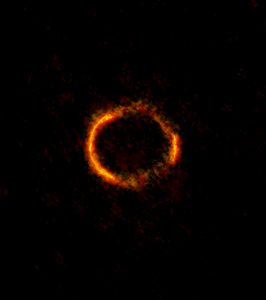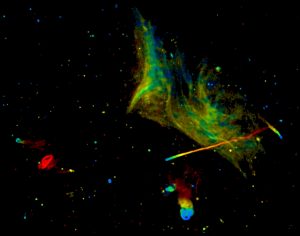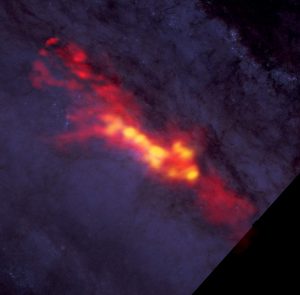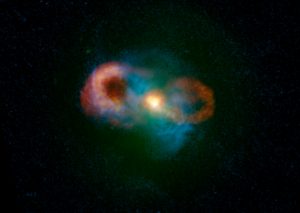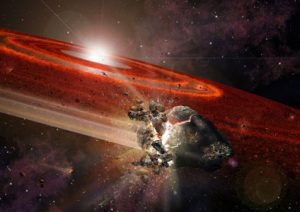ALMA finds first example ever of globular cluster about to be born.
ALMA Sees Einstein Ring in Stunning Image of Lensed Galaxy
Astronomers have observed a cosmic ring with the help of ALMA.
Image Release: Mysterious Phenomena in a Gigantic Galaxy-Cluster Collision
Researchers using the Karl G. Jansky Very Large Array (VLA) have produced the most detailed image yet of a fascinating region where clusters of hundreds of galaxies are colliding, creating a rich variety of mysterious phenomena visible only to radio telescopes.
Why Do Starburst Galaxies Burst? ALMA Sees Super Stellar Nurseries at Heart of Sculptor Galaxy
ALMA dissects NGC 253 to better understand starburst.
VLA Finds Unexpected Storm at Galaxy’s Core
Astronomers using the National Science Foundation’s Very Large Array (VLA) found surprisingly energetic activity in what they otherwise considered a ‘boring’ galaxy, and their discovery provides important insight on how supermassive black holes can have a catastrophic effect on the galaxies in which they reside.
NRAO’s Top 10 Radio Hits of 2014
Looking back at the science news released by NRAO in 2014, the staff scientists at NRAO selected what they believed were the top 10 stories based on both scientific impact and public interest.






